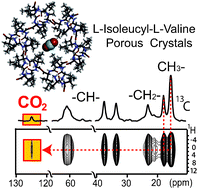Porous dipeptide crystals as selective CO2 adsorbents: experimental isotherms vs. grand canonical Monte Carlo simulations and MAS NMR spectroscopy†
Abstract
Molecular crystals of

- This article is part of the themed collection: Covalent organic frameworks

 Please wait while we load your content...
Please wait while we load your content...